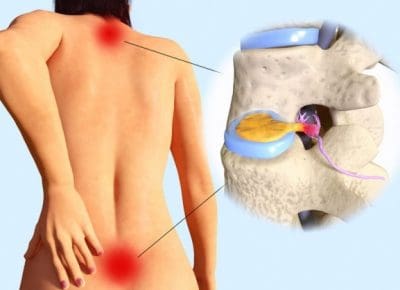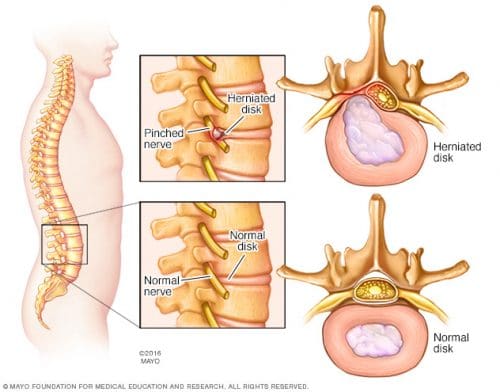Exercise is a frequent component of disc treatment. Your pain will be reduced by maintaining a proactive approach and help ensure the long-term health of your spine.
A herniated disc may need 1 or 2 days rest to relieve pain. You need to resist the desire to lie in bed for days at a time since your muscles need conditioning to help the healing procedure. Your body may not respond to treatment, should you forgo physical activity and exercise.
Benefits of Exercise for Herniated Discs
Exercising is an efficient method to strengthen and stabilize your low back muscles and prevent additional injury and pain. Strong muscles support your own body weight and bones, carrying pressure.
However, even if you have powerful muscles to support your spine, you must get rid of excess weight to truly support your spine. Your back is strained by carrying around extra weight constantly, you're practically doing all of the time to heavy lifting! Losing weight will reduce your pain and encourage the health of your back. If you need to lose weight, talk to you physician about the different choices you may have.


Types of Exercise for Herniated Discs
You don't need to endure an intense cardio program or lift heavy weights, simple stretches and aerobic exercises may efficiently control your herniated disc pain.
Stretching programs like yoga and Pilates enhance flexibility and strength, and supply relief of severe pain in your leg and low back. Your physician can also prescribe dynamic lumbar stabilization exercises. This program contains exercises that work the abdominal and back muscles to address posture, flexibility, and stamina.
Moderate aerobic activities, including walking, biking, and swimming, also help relieve pain. Some activities might be better suited to your particular condition. Speak with your doctor about what exercises will help you.
When beginning an aerobic exercise program, start slow--perhaps 10 minutes the first day--and gradually increase your time each day. Eventually, you should aim for 30 to 40 minutes of activity 5 days per week.
Exercise may be a pleasant and satisfying method to take care of symptoms associated with a herniated disc. Your physician and you can work together to develop a program which you will lower your pain and could stick with. In the end, exercise can help you feel better, and it should help relieve your pain from a herniated disc.
Herniated Disc Exercises (Video)
When Should You Go to a Doctor For Herniated Disc Pain?
Oftentimes, patience and time (and perhaps some medication) are sufficient to reduce the pain of a lumbar herniated disc, however, a new study indicates that waiting too long to seek medical treatment for your low back pain may end up doing more harm than good.
The findings, which were introduced in the 2010 Annual Meeting of the American Academy of Orthopaedic Surgeons (AAOS), revealed that patients who waited more than 6 months to report their herniated disc symptoms to a doctor didn't respond to therapy in addition to those who waited less than 6 weeks to seek out medical advice.
In this study, researchers compared 927 patients who had lumbar herniated disc symptoms for less than 6 weeks to 265 patients who had symptoms for more than 6 months.
The researcher team found that the patients who sought medical therapy within 6 weeks of first experiencing symptoms reacted better to both nonsurgical and surgical treatments.
The lesson patients ought to learn from this research, researchers say, is not to wait too long to see your doctor if your herniated disc pain is severe. Visiting a doctor sooner rather than later might enhance the success of your treatment, in case you have low back pain that persists.
 The scope of our information is limited to chiropractic and spinal injuries and conditions. To discuss options on the subject matter, please feel free to ask Dr. Jimenez or contact us at 915-850-0900 .
The scope of our information is limited to chiropractic and spinal injuries and conditions. To discuss options on the subject matter, please feel free to ask Dr. Jimenez or contact us at 915-850-0900 .By Dr. Alex Jimenez
Additional Topics: Sciatica
Lower back pain is one of the most commonly reported symptoms among the general population. Sciatica, is well-known group of symptoms, including lower back pain, numbness and tingling sensations, which often describe the source of an individual's lumbar spine issues. Sciatica can be due to a variety of injuries and/or conditions, such as spinal misalignment, or subluxation, disc herniation and even spinal degeneration.





